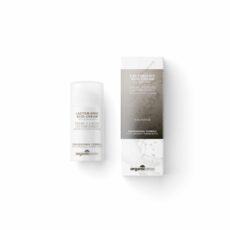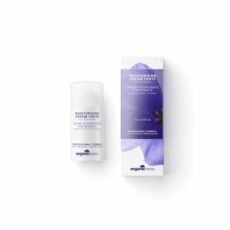Lactobionic Acid in the Summer
Lactobionic Acid: Lactobionic acid, a next-generation polyhydroxy acid (PHA), has gained popularity in the skincare world for its gentle yet effective exfoliating properties. Unlike its alpha hydroxy acid (AHA) and beta hydroxy acid (BHA) counterparts, lactobionic acid is suitable for even the most sensitive skin types. It works to hydrate, reduce signs of aging, and improve skin texture without causing irritation. However, using it safely, especially during the summer months, requires some specific strategies. Here are five detailed tips to help you incorporate lactobionic acid into your summer skincare routine effectively and safely.
1. Start Slowly and Build Tolerance
When introducing lactobionic acid into your skincare regimen, especially during summer, it’s crucial to start slowly to build your skin’s tolerance. Begin by applying the product once or twice a week in the evening. This allows your skin to adjust to the new ingredient without overwhelming it. Lactobionic acid’s larger molecular structure penetrates the skin more slowly, reducing the risk of irritation and sensitivity, but gradual introduction is still essential.
Detailed Explanation:
- Why Slow Introduction Matters: Even though lactobionic acid is milder than AHAs and BHAs, starting slowly helps your skin build resilience. Abruptly adding any new active ingredient can disrupt your skin barrier, leading to redness, peeling, and discomfort.
- Increasing Frequency: After two weeks, if your skin shows no signs of irritation, you can gradually increase the frequency to every other night. Pay close attention to how your skin responds and adjust accordingly.
- Monitoring Skin Response: Keep an eye on your skin’s reaction. If you notice excessive dryness, flakiness, or redness, reduce the frequency of use. Each person’s skin has different tolerance levels, so personalizing the application schedule is key.
2. Always Apply Sunscreen
Lactobionic acid can make your skin more sensitive to the sun, increasing the risk of UV damage. Therefore, it’s imperative to use a broad-spectrum sunscreen with at least SPF 30 every morning. Sunscreen not only protects against sunburn but also prevents the formation of dark spots and hyperpigmentation, which can be exacerbated by sun exposure when using exfoliating acids.
Detailed Explanation:
- Choosing the Right Sunscreen: Opt for a sunscreen that offers broad-spectrum protection against both UVA and UVB rays. Ingredients like zinc oxide and titanium dioxide provide physical barriers against UV radiation and are less likely to cause irritation.
- Application Tips: Apply sunscreen generously to all exposed skin areas, including the face, neck, and hands. Don’t forget less obvious areas like the ears and the back of the neck.
- Reapplication: Sunscreen should be reapplied every two hours, especially if you’re outdoors, swimming, or sweating. Keeping a travel-sized sunscreen in your bag can help ensure you maintain protection throughout the day.
3. Pair with Hydrating and Soothing Ingredients
Since lactobionic acid has hydrating properties, pairing it with other hydrating and soothing ingredients can amplify its benefits and mitigate potential dryness or irritation. Look for products containing hyaluronic acid, glycerin, ceramides, and aloe vera to maintain optimal skin hydration and barrier function.
Detailed Explanation:
- Hydrating Serums: Incorporate a hydrating serum into your routine. Hyaluronic acid, for instance, attracts moisture to the skin, enhancing the hydration provided by lactobionic acid. Apply the serum after the lactobionic acid treatment for maximum hydration.
- Moisturizers: Use a moisturizer rich in ceramides and glycerin. Ceramides help restore the skin barrier, while glycerin attracts moisture from the environment into the skin, keeping it plump and hydrated.
- Soothing Ingredients: Aloe vera and chamomile are excellent for soothing the skin. Products containing these ingredients can calm any potential irritation caused by the exfoliating action of lactobionic acid.
4. Avoid Combining with Other Harsh Actives
To prevent over-exfoliation and irritation, avoid using lactobionic acid in combination with other potent actives like retinoids, AHAs, BHAs, and benzoyl peroxide. Mixing too many active ingredients can overwhelm your skin, leading to sensitivity, redness, and peeling.
Detailed Explanation:
- Separate Nights for Different Actives: If you use retinoids or other acids, alternate their usage on different nights. For example, use lactobionic acid on Mondays and Thursdays, and retinoids on Tuesdays and Fridays. This approach allows each active ingredient to work effectively without causing irritation.
- Simplify Your Routine: Focus on a simplified routine that balances active treatments with soothing and hydrating products. This balance helps maintain skin health and prevents potential adverse reactions from product overload.
- Patch Testing: Before fully incorporating lactobionic acid or any new product into your routine, perform a patch test. Apply a small amount to a discreet area of your skin and wait 24 hours to ensure no adverse reaction occurs.
5. Hydrate from Within and Stay Cool
Keeping your body hydrated and your skin cool is essential, especially in the summer heat. Drink plenty of water throughout the day and use facial mists to cool your skin. Staying hydrated from within helps maintain skin elasticity and suppleness, while facial mists provide instant relief from the heat and prevent dehydration.
Detailed Explanation:
- Water Intake: Aim to drink at least 8 glasses of water a day. Hydration supports all bodily functions, including skin health. When your skin is well-hydrated, it can better resist the potential drying effects of exfoliating acids.
- Facial Mists: Carry a facial mist in your bag for a quick refresh during the day. Look for mists with soothing ingredients like rose water or green tea extract. These can cool your skin and provide a light layer of hydration without disrupting your makeup or skincare.
- Avoid Overheating: Excessive heat can exacerbate skin sensitivity and redness. Stay in the shade, use fans or air conditioning, and wear breathable fabrics to keep your body temperature regulated. Using a cool, damp cloth on your face can also help reduce any heat-induced discomfort.
Conclusion
Incorporating lactobionic acid into your skincare routine can yield remarkable benefits, from smoother texture to more even skin tone. By following these ten best tips—starting slowly, always applying sunscreen, pairing with hydrating and soothing ingredients, avoiding harsh actives, and hydrating from within and staying cool—you can use lactobionic acid safely and effectively, even during the summer months. Embrace these practices to enjoy a radiant, glowing complexion while protecting your skin’s health and integrity.
Expert recommendation
Organic Series Lactobionic Acid Cream

More inspiration
Follow Organic Series UK on instagram and facebook for more inspiration, expert tips and special discount codes!
Lactobionic Acid By Organic Series
-
Face Moisturiser with Sunscreen SPF40 | Moisturising Cream SPF High Protection By Organic Series | 15ml, 50ml
From £ 12.00Rated 4.67 out of 506 reviews -
Organic Facial Cleanser | Optimal Facial Cleanser By Organic Series | 50ml, 200ml
From £ 24.00Rated 5.00 out of 505 reviews -

Maria
Cosmetic Chemist
Maria
All Author Posts








